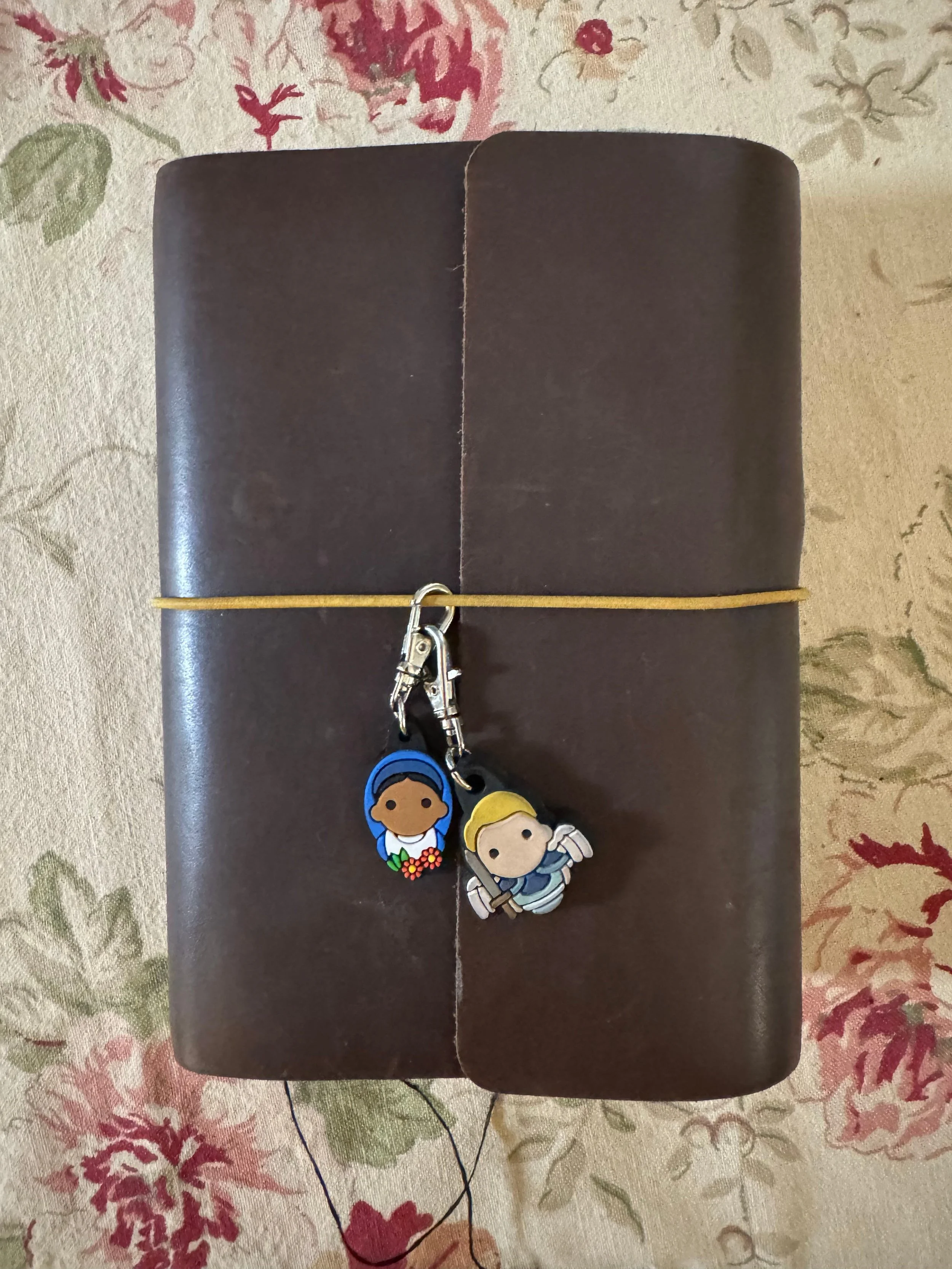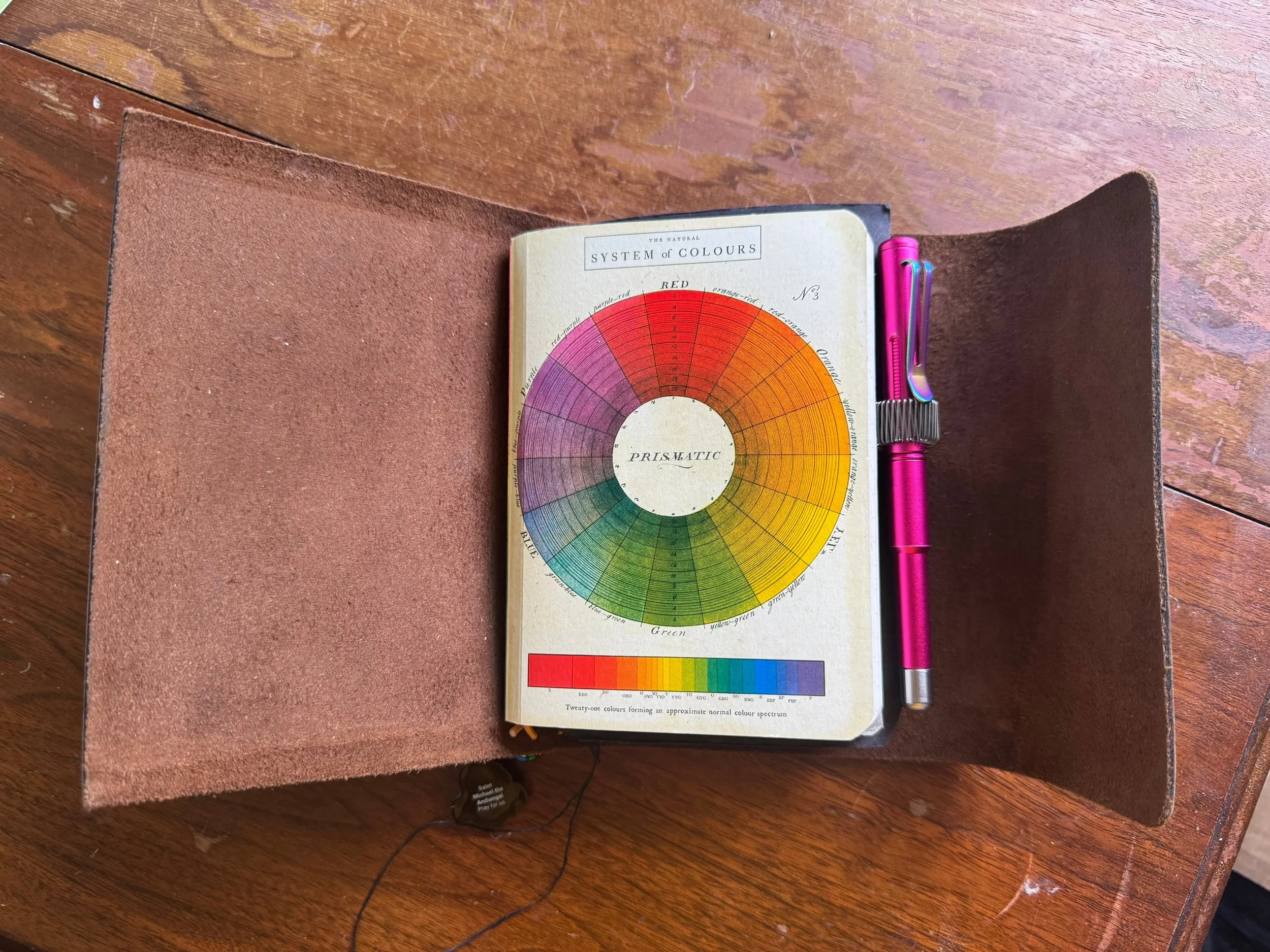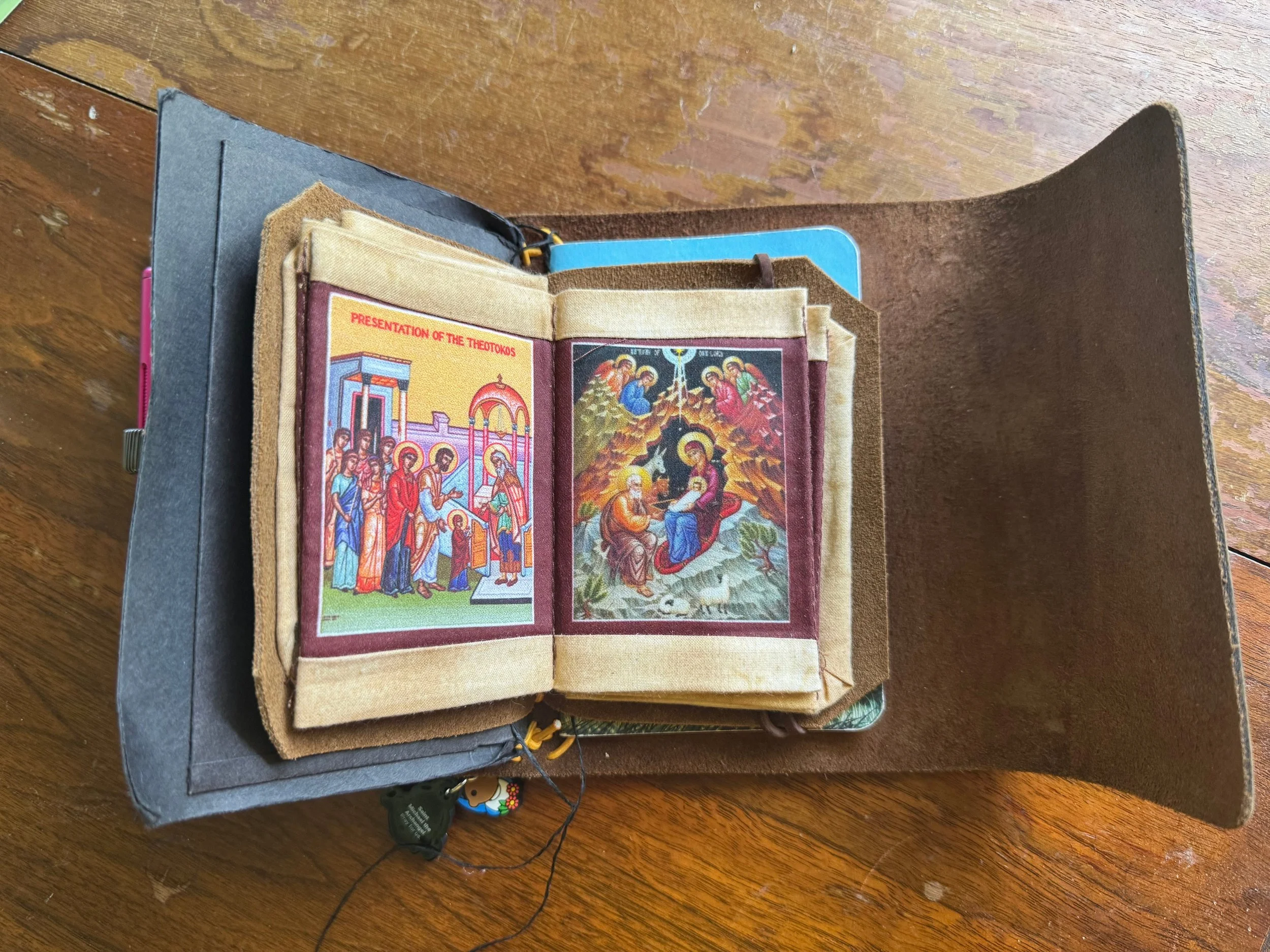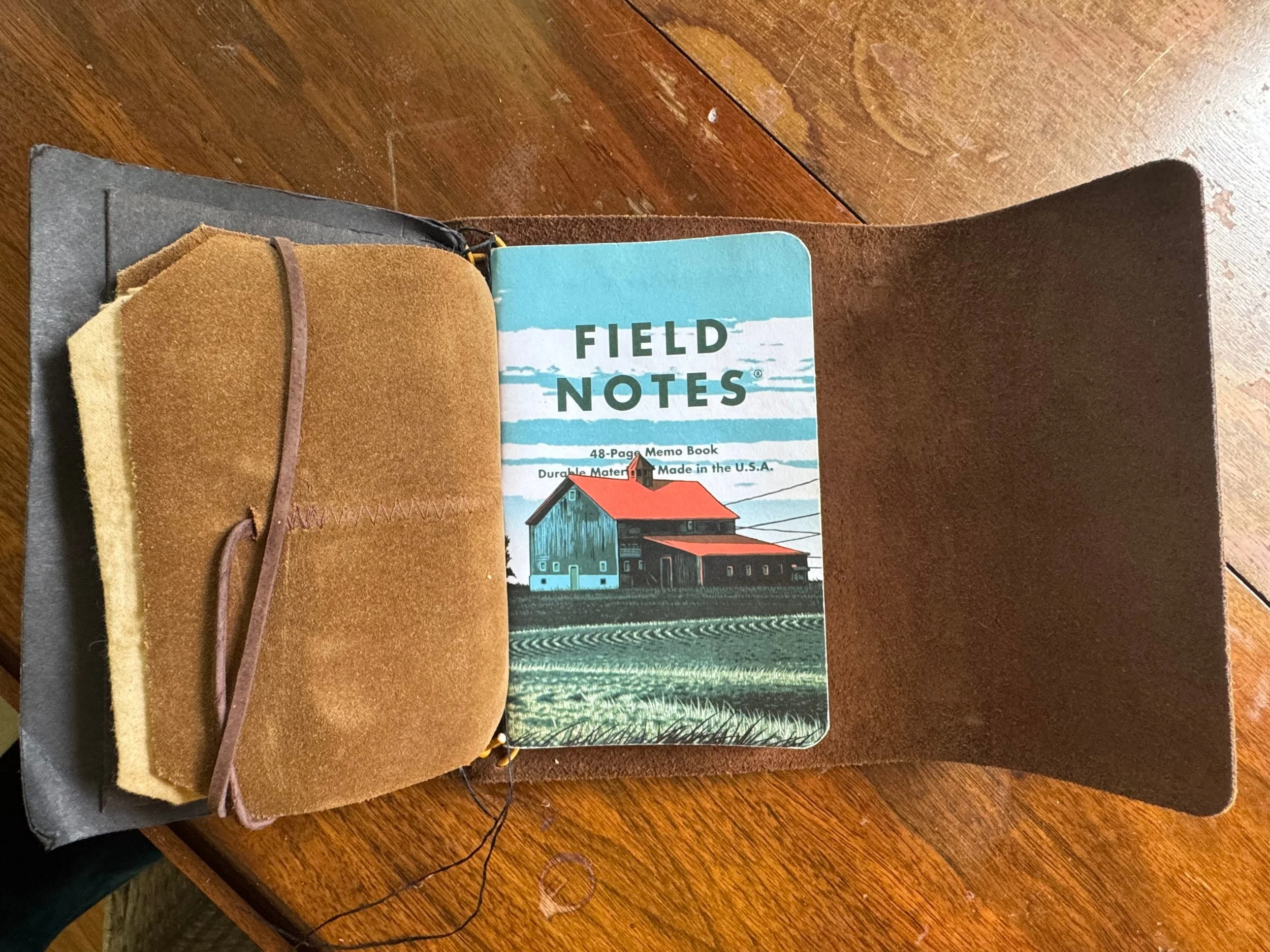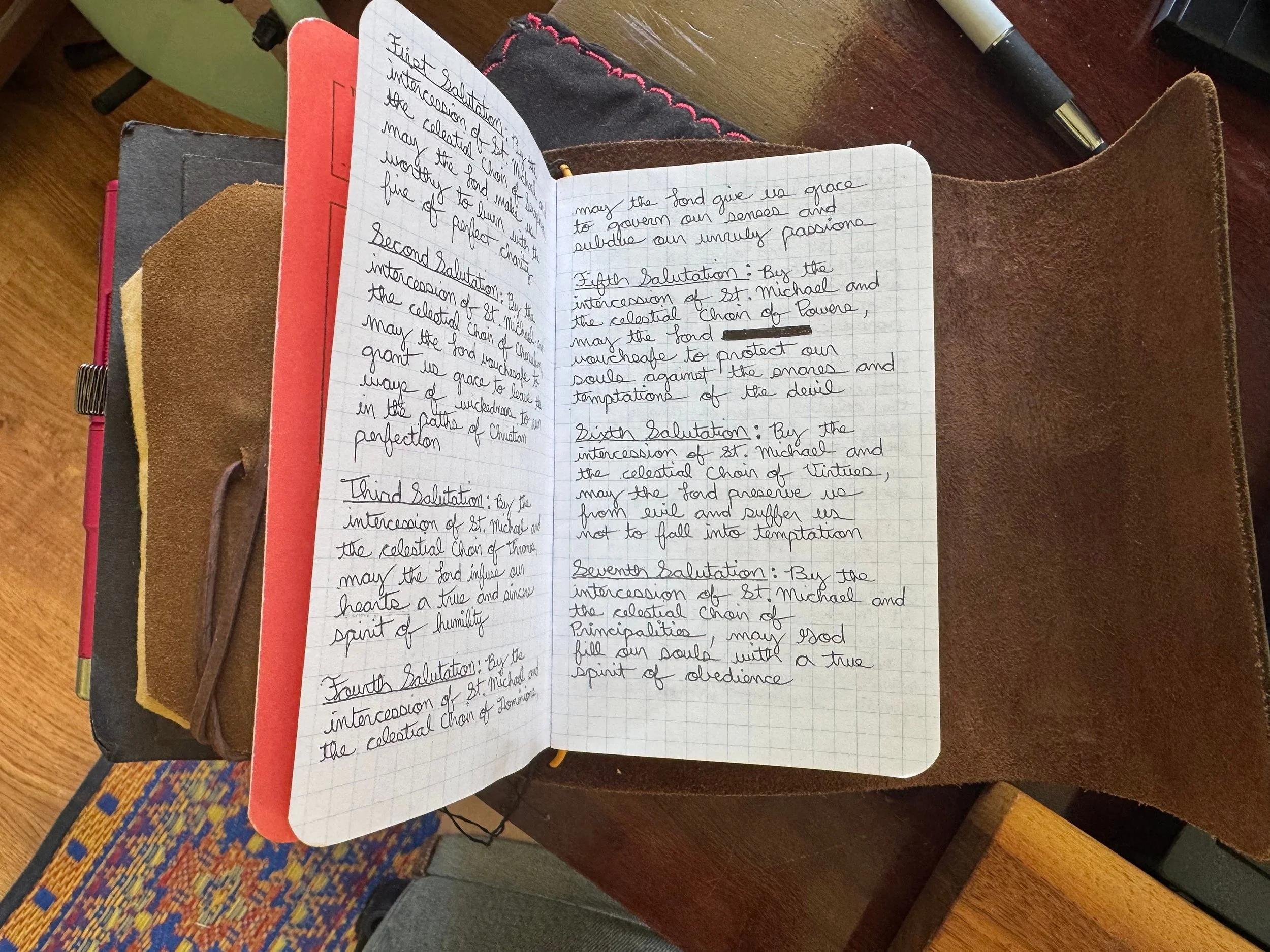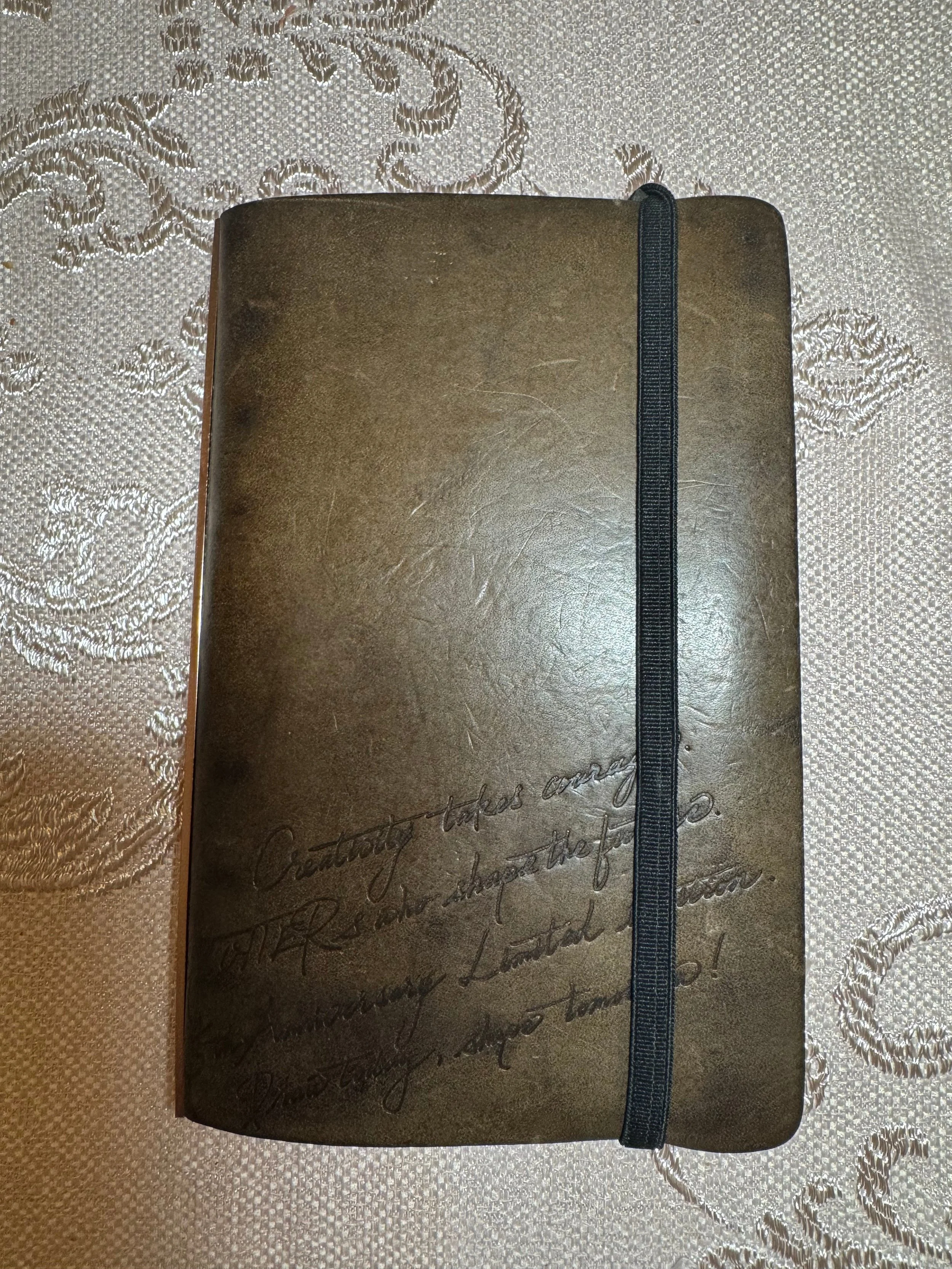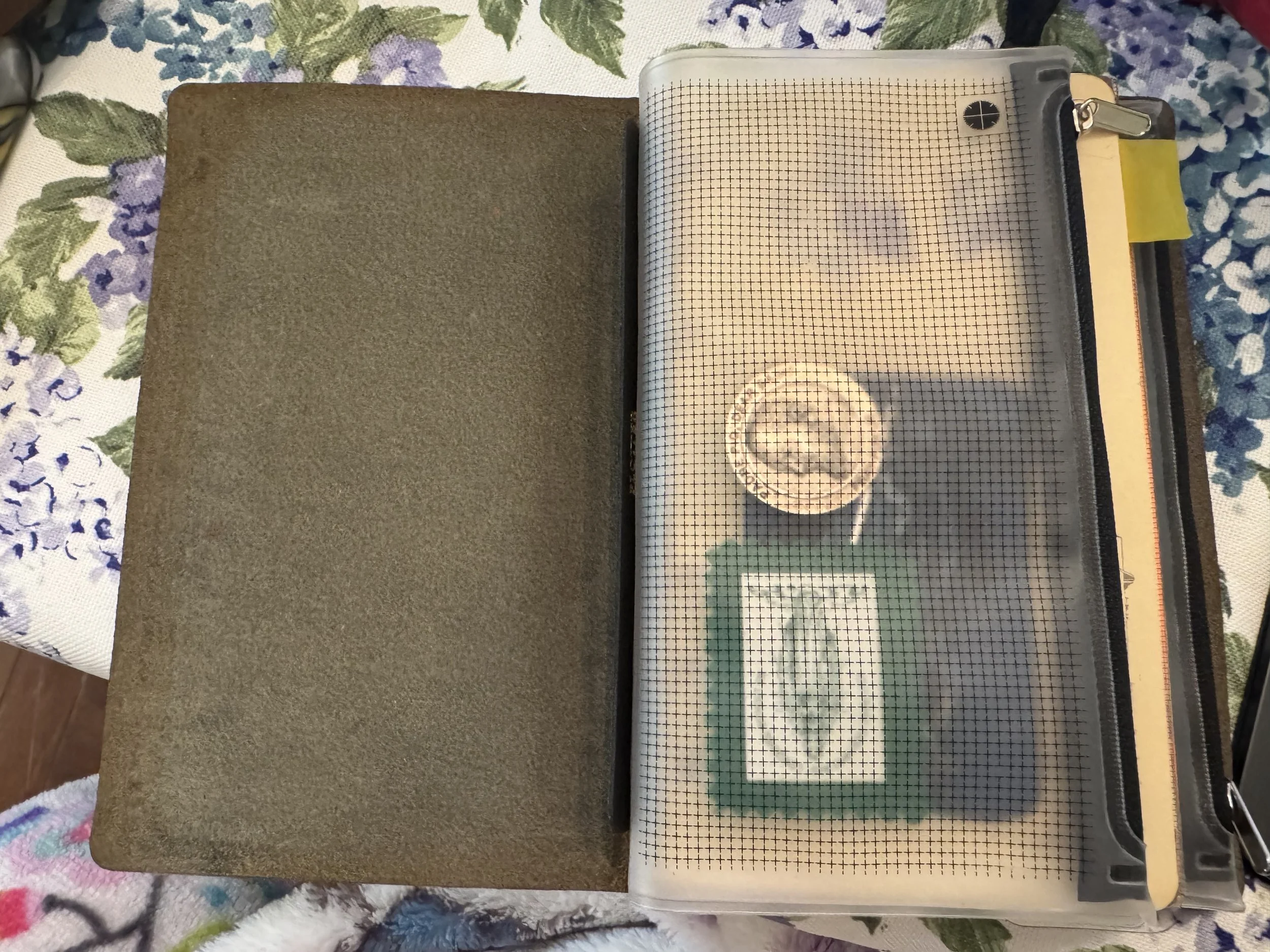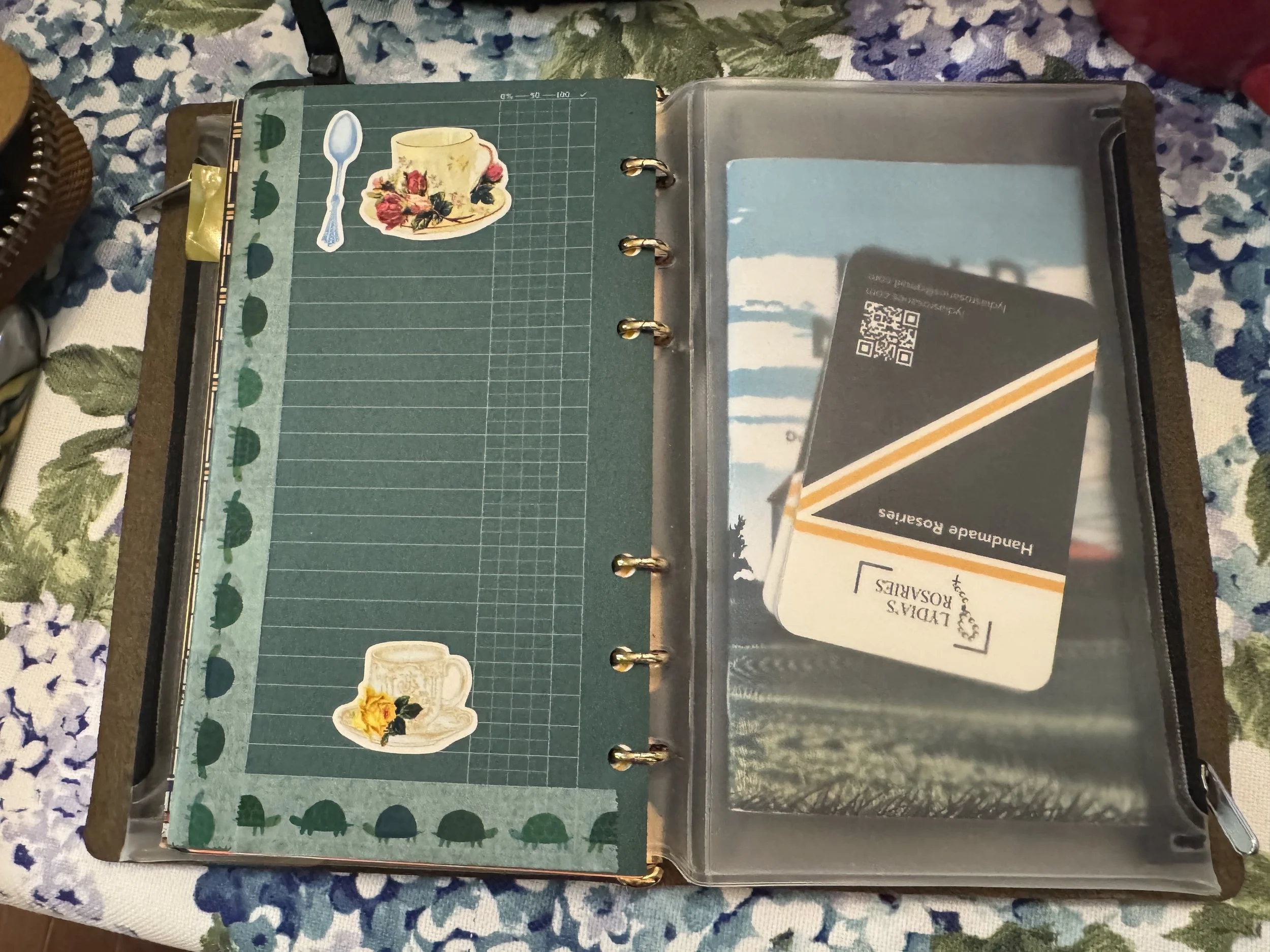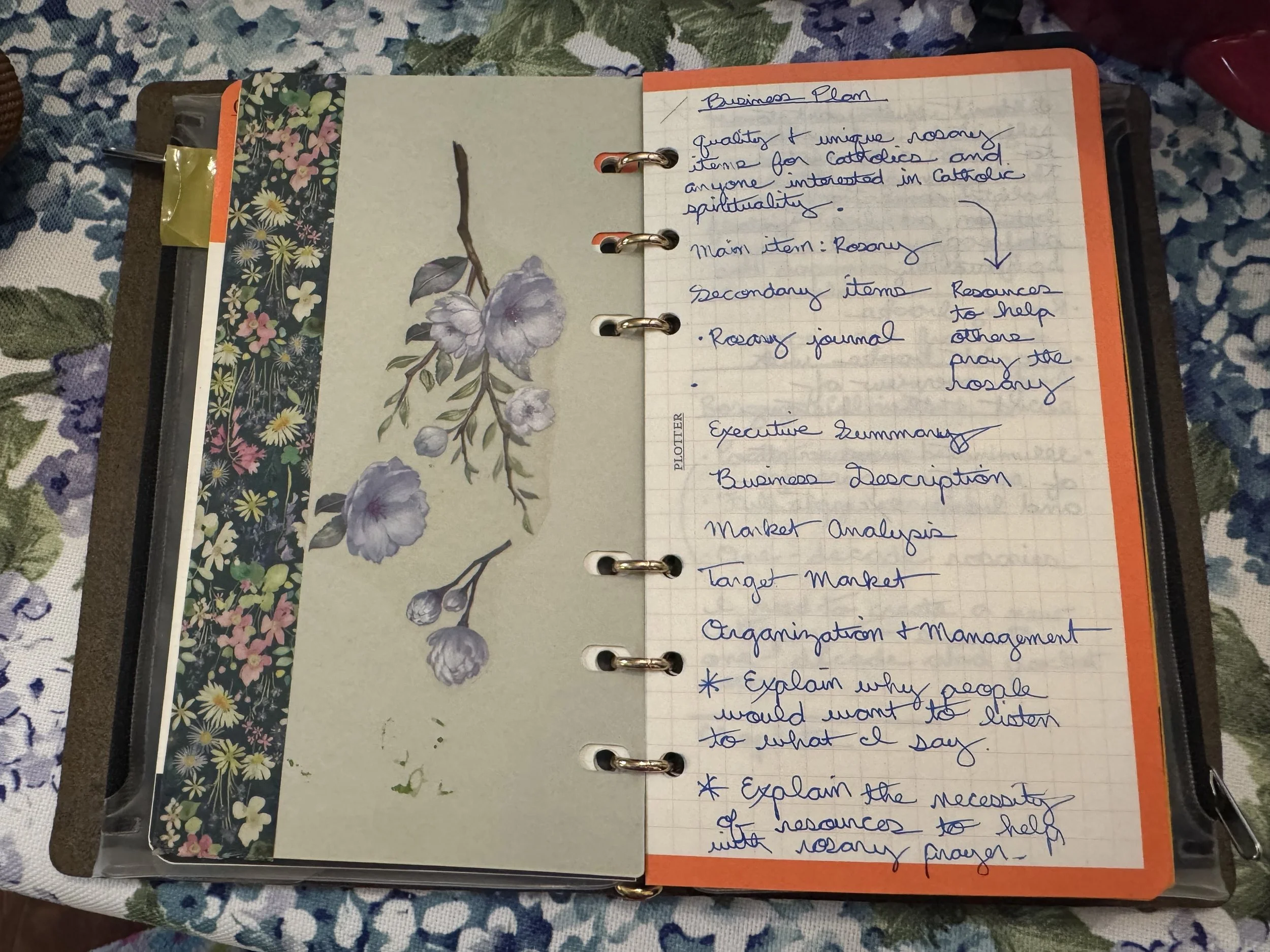A few years ago I purchased an A6 notebook cover from Little Mountain Bindery, a small business in Fayetteville, Arkansas, that makes custom notebook covers and offers book rebinding services. As a fellow Arkansan, I felt compelled to support this local stationery business. Since I mostly use A5 covers, I thought I’d try a different size this time. For Americans who don’t understand random paper size callouts, here’s a quick overview:
A4 is the popular standard sized document, sized slightly longer and skinnier than our 8.5x11 standard sized document. If you fold an A4 in half on the long edge, you get A5, which is used predominantly for notebooks and planners. A6, as you can guess, is half the size of A5. Since I had a few A5 covers, I decided to go for the A6 cover for pocket notebooks. I tend to use pocket notebooks for jotting down notes and keeping any other scribbles that don’t require large amounts of writing. Many users today find them a useful means to stave off doomscrolling.
I also find myself gravitating toward smaller notebooks for Mass. They’re compact enough to slip in and out during times in the service when I want to jot down a quick reflection from the homily, or a prayer that comes to me that I want to reflect on more deeply. Since Mass is an interactive experience, I don’t have many opportunities to sit and reflect for too long, so a small form factor is most useful for me in those situations. For a long time I used this A6 brown trifold cover for my Mass notes, and then put it aside for a while. However, I decided to push it to its limit to see how I could make this simple notebook cover a reflection of my interactivity in Mass. I didn’t just want to create a place for words, but a sacred space that incorporated reflection, images, and scripture passages. I’m still figuring out what works best for me, but I’m pleased so far with what I’ve created.
This A6 journal is similar to the Traveler’s Notebook system I discussed in Part 1 of this series on personal operating systems. It’s a brown leather cover with cords to place three pocket A6 notebooks. This design, however, incorporates a trifold cover instead of the bifold of the Traveler’s. The first part of my Mass cover is my reflection journal. This is my go-to for journaling and reflecting on anything that pops into my mind. This practice helps me focus on the present moment and not let my mind wander too much during the homily or other quiet moments in the Mass. The second cord holds a handmade pocket iconostasis made by DoorNumber9 on Etsy. The iconostasis is a small sewn book that shows all 12 Great Feasts of the Church. Each scene can be flipped through in a book form or expanded in an accordion style.
It’s such a clever way to meditate on the major stories outlined in the New Testament in a visual way. I’ve written some about the philosophy of Iconography in past articles and how meld them into my spiritual life. The iconostasis fits perfectly in this A6 cover, and I love the ability to create a compact notebook shrine that’s easy to take with me. It’s another tool for me to disconnect with my phone and focus on the constraints of the objects in front of me, with the visual interactivity to keep me engaged in a unique way.
The third cord holds a Field Notes pocket notebook for traditional rote prayers and chaplets. I used to keep this in my Plotter I wrote about in a previous article. But I decided to move it over to this cover since it fits well in this A6 cover. This size is perfect for chaplets that I don’t know from memory, such as the St. Michael chaplet. Housing prayers in a simple pocket notebook keeps these items more organized than digital means, or even in a pre-made book, as it allows me to curate my own on prayers that are meaningful to me.
So to recap, this cover houses three main components:
personal reflection
iconostasis for visual prayer and meditation
commonplace pocket notebook for traditional rote prayers and chaplets
These three components housed in one cover provides a unique experience that allows me to slow down and engage in practices that actively help me grow as a person. I hope this inspires you to reflect on how you can create your own personal physical system.

